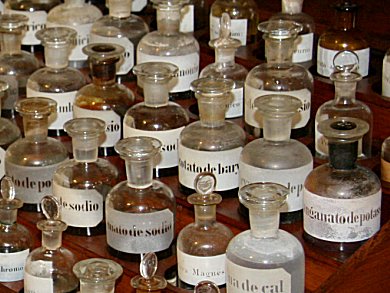Have you heard of Banska Stiavnica or Banská Štavnica in Slovak, Schemnitz in German and Selmecbánya in Hungarian? As the various names suggest, the town has had a lively political history, but it also played a significant role in the history of science. This year is the 250th anniversary of the first technical university, proclaimed in this town that now lies in Slovakia, and its contribution to our present practice of science does not end there.
Europe’s First University: Sciences Lag Behind
It is widely known that Europe’s first university was founded in Bologna [1] in 1088. The classics were the focus of study, starting with law. At best medicine and astronomy were the only sciences that had the standing to be included in places of learning, but in Bologna, for instance, that took 300 years.
Center of Innovation in the Mining Industry
In the Middle Ages Banská Štavnica was the main producer of silver and gold in the Kingdom of Hungary, a part of the Austrian-Hungarian Empire. Mentioned as early as 1156 as “terra banensium” (the land of miners), it was given the status of a royal town in 1238. As implied by its first name, Banská Štavnica was foremost a center of innovation in the mining industry. Here gun powder was used for the first time in a mine in 1627, and water reservoirs and channels, known as “tajchy”, were designed to drain away underground flood water, but also to provide energy for the early industrialization.
First Institute of Technology in the World
The first mining school in the Kingdom of Hungary was founded in Banská Štavnica in 1735 and with the support of Queen Maria Theresa, the Hofkammer in Vienna transformed the school into the famous Mining Academy in 1762, thus establishing the first Institute of Technology in the world two and a half centuries ago. The first Department was that of Chemistry and Mineralogy. Nicolaus Jacquin from Leyden, the Head of Department, laid emphasis on combining theory with practice and based his lectures on his own laboratory experiments.
A famous chemist, Antoine-Laurent de Lavoisier, considered Jacquin the founder of experimental education in Chemistry and Lavoisier’s disciple, Antoine Fourcroy, [2] who was instrumental in establishing many places of higher learning in France, gave prestigious credit to the integration of laboratory experiments in chemistry education at the Mining Academy in the French National Convent in 1794.
The Mining Academy in Banská Štavnica became the example for the Polytechnique in Paris and many other polytechnics in Europe.
First International Scientific Congress and Society
Another novel idea, which still forms a major part of our practice of science today, was implemented by this place of learning in 1786, when it organized the first International Scientific Congress in Sklene Teplice. Lavoisier was one of the delegates. At this meeting the first international society, “La Société de la Exploration des Mines” was also established. This year the Slovakian Chemical Society is celebrating 250 years of an institution that has served science so well, that many of its innovations are firmly fixed in the tradition of science today.
References
[1] Università di Bologna, Our History
http://www.eng.unibo.it/PortaleEn/University/Our+History/default.htm
[2] Antoine Fourcroy from “Chamber’s Encyclopedia”, 2012.
http://gluedideas.com/content-collection/chambers-6/Antoine-Fourcroy.html




